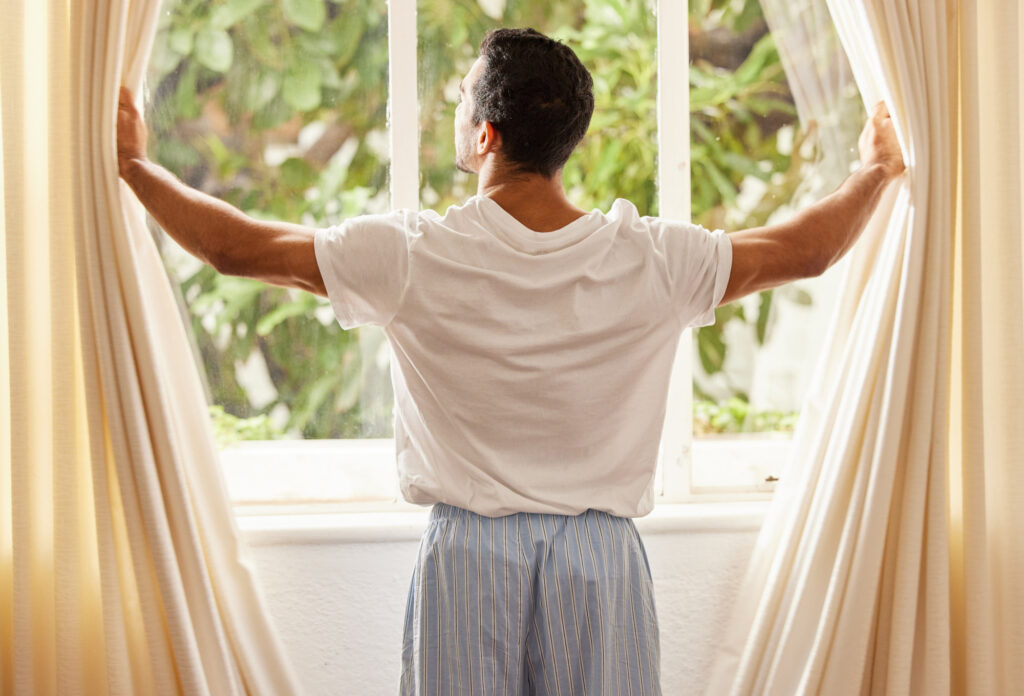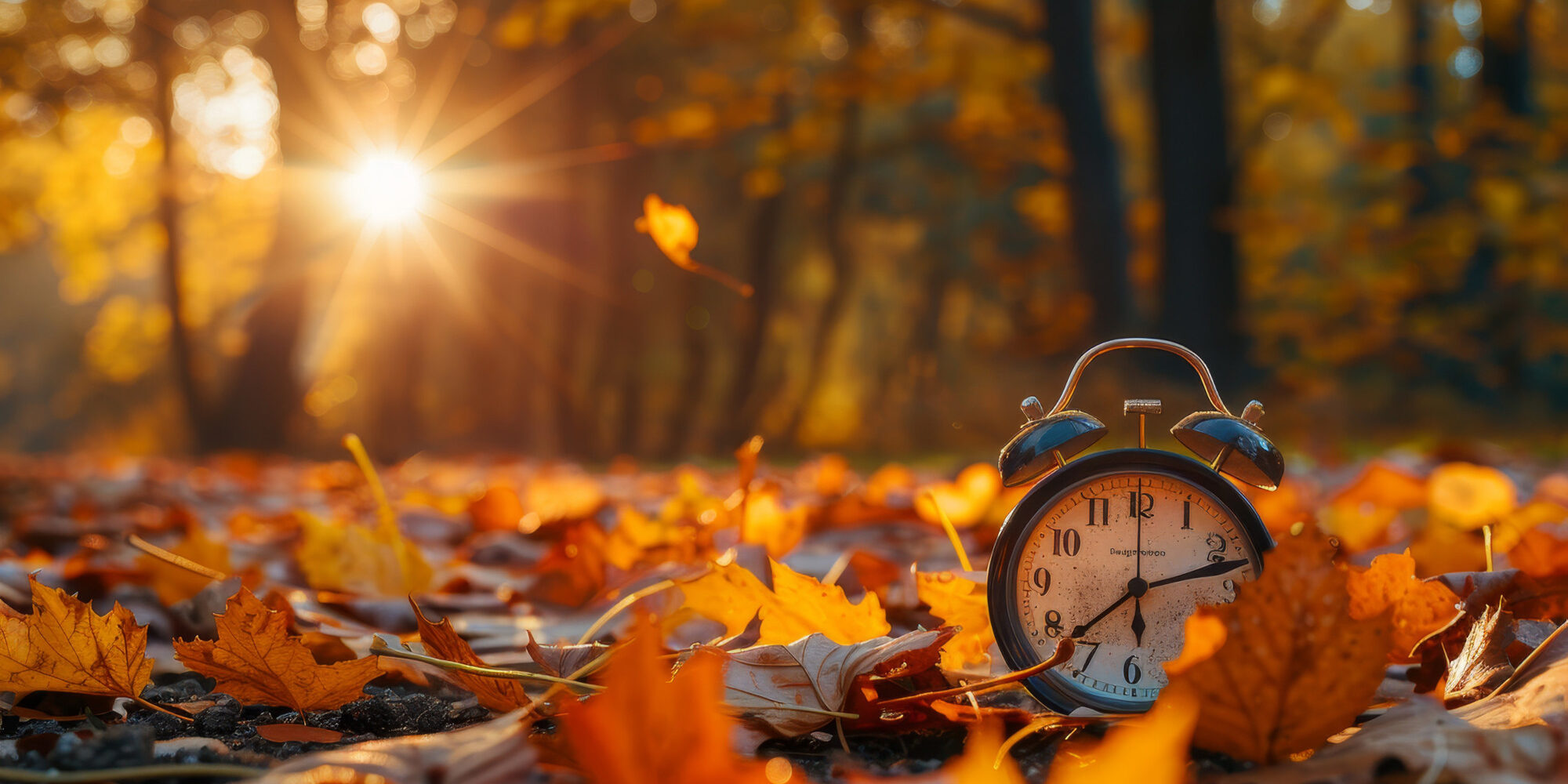As the clocks “fall back” and the holidays approach, our routines often get turned upside down. Between daylight savings time, shorter days, and cross-country travel, it’s easy for even the best sleepers to feel off balance this time of year. For those already managing sleep issues—or using CPAP therapy—the season can bring unique challenges that leave you feeling tired, groggy, or out of sync.
Fortunately, a few simple strategies can help you protect your sleep, stay energized, and make the most of the busy (and often exhausting) holiday season.
1. The “Fall Back” Effect — Why an Hour Still Matters
When daylight savings time ends in November, we gain an extra hour of sleep—but our bodies may not see it that way. That one-hour shift can still disrupt your circadian rhythm, the internal clock that tells your body when it’s time to sleep and wake.
According to the American Academy of Sleep Medicine (AASM), even small time shifts can cause temporary sleepiness, mood changes, and difficulty concentrating. For people with obstructive sleep apnea (OSA), these disruptions can feel magnified—especially if your sleep schedule is already fragile.
To help your body adjust:
- Stick to a consistent bedtime and wake time, even on weekends.
- Get morning sunlight exposure to reset your circadian clock.
- Avoid staying up late just because the clock says it’s “earlier.”
It might feel like a small adjustment, but maintaining routine is key to preventing that post–time change slump.

2. Shorter Days, Longer Nights — The Seasonal Sleep Shift
As autumn fades into winter, daylight grows scarce, and our internal clocks naturally shift. With less sunlight exposure, your body produces more melatonin, the hormone that promotes sleepiness. While that might sound like a good thing, it can actually lead to feeling tired too early, sluggish during the day, or wide awake late at night.
Additionally, the darker months can increase the risk of Seasonal Affective Disorder (SAD), a form of depression that typically arises when daylight hours decrease. Symptoms often overlap with poor sleep—fatigue, irritability, and lack of focus—making it easy to mistake SAD for sleep apnea or vice versa.
Here’s how to stay balanced:
- Seek light exposure early in the day. Open curtains first thing in the morning or take a short walk outside.
- Stay active. Even light physical activity can help regulate your sleep-wake cycle and boost mood.
- Watch evening light. Dim screens and bright lights at night to help your brain wind down naturally.
3. Holiday Travel: A Sleep Routine Nightmare
Whether you’re driving across town or flying across the country, the holiday season often means travel—and disrupted sleep. New environments, strange beds, late nights, and early flights can wreak havoc on your sleep schedule.
For those with OSA who rely on CPAP therapy, planning ahead makes all the difference. The Transportation Security Administration (TSA) allows CPAP machines as carry-on medical devices, but you’ll want to:
- Pack your CPAP in a dedicated travel bag with all attachments.
- Bring an extension cord in case outlets are far from your bed.
- Use distilled water in your humidifier when possible (or bring a small bottle).
- Check airline rules ahead of time if you plan to use your device in-flight.
If you’re traveling across time zones, aim to adjust your sleep schedule gradually—going to bed and waking up 15–30 minutes earlier or later for a few nights before your trip can make a big difference.
And don’t forget: even small things like bringing your own pillow or a white noise app can make unfamiliar hotel rooms or guest bedrooms feel a bit more like home.

4. Simple Tricks to Stay Rested During the Busy Season
The holidays often mean packed calendars, big meals, and late nights catching up with family and friends. But skipping sleep to squeeze in more activity can backfire—affecting your immune system, focus, and even your mood.
To keep your energy up and stress down:
- Stay hydrated and limit alcohol or caffeine close to bedtime.
- Wind down intentionally. Try reading, meditation, or gentle stretches instead of scrolling through your phone.
- Eat moderately. Heavy meals late in the evening can disrupt digestion and delay sleep onset.
- Listen to your body. If you’re feeling exhausted, prioritize rest over one more errand or event.
Think of sleep as your holiday recharge—not a luxury, but a necessity for enjoying the season.
5. The Takeaway: Give Yourself the Gift of Good Sleep
This November, as you “fall back” and head into the holidays, remember that good sleep is one of the best gifts you can give yourself (and your loved ones).
If you’re struggling with constant fatigue, loud snoring, or morning headaches, it might be time to talk with your doctor about a sleep study. Home sleep testing makes it easier than ever to get answers—and early diagnosis of conditions like sleep apnea can dramatically improve your quality of life.
Whether you’re managing CPAP therapy, traveling across time zones, or simply adjusting to the shorter days, protecting your sleep will help you stay healthy, alert, and truly present for the people and moments that matter most.
References:
- American Academy of Sleep Medicine. (2023). How daylight saving time affects sleep. Retrieved from: https://sleepeducation.org/daylight-saving-time-affects-sleep/
- Centers for Disease Control and Prevention (CDC). (2023). Traveling and sleep health. Retrieved from: https://www.cdc.gov/sleep/about_sleep/travel.html
- National Sleep Foundation. (2023). How to manage sleep during the holidays. Retrieved from: https://www.thensf.org/
- American Academy of Sleep Medicine. (2016). Economic burden of undiagnosed sleep apnea in the U.S. is nearly $150 billion per year. Retrieved from: https://aasm.org/economic-burden-of-undiagnosed-sleep-apnea-in-u-s-is-nearly-150b-per-year/








